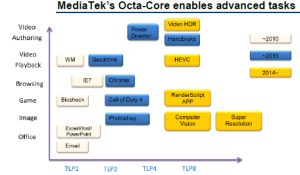The Indian telecom authorities chose TD-LTE, a relatively newer technology and that is still been tried out globally. Globally, there have been commercial rollouts in FD-LTE by large scale operators such as Verizon and AT&T, however TD-LTE rollouts are at a
nascent stage. Hence the device ecosystem for TD-LTE services, especially on the 2.3 GHz spectrum is poor. The following Chart Shows the Global 4G LTE[TD/ FDD] Deployments by various Operators and their operating frequency bands as well.
Month: August 2013
Is TRAI Hinting at More Balanced Telecom Regime Ahead ?
In the aftermath of the 2G Spectrum Scam engineered by Politicians and Cronies in the Congress Party, the near-term positive is likely to be in the form of reduced spectrum prices recommended to the Government. Moreover, with the possibility of penal powers shifting to TRAI (from DoT), the regulatory outlook is likely to improve further. Whilst we do not expect a complete end to punitive actions from the DoT, a
How China Unicom plans to Rollout its 4G LTE network ?
 We attended the China Unicom [CU] Management Call which was mainly focused on Wireless Data Services.
We attended the China Unicom [CU] Management Call which was mainly focused on Wireless Data Services.
FD-LTE will be mainstream choice for CU. TD-LTE could be a supplementary network to offload part of data traffic. CU will actively prepare an WCDMA upgrade to FD-LTE and do some FD-LTE trials. CU expects regulators will most likely issue a FD-LTE license later than TD-LTE, but is not sure about the time span between TDLTE and FD-LTE licensing. In the long term. CU still has a technology advantage over peers by upgrading WCDMA to LTE.
Management believes the previous guidance
Is Asus Tablet Sales Sustainable ? What’s the Strategy ?
 Asus is now the No.3 tablet maker in the world, more than half of its tablet shipments are backed by the power of Google Nexus, and Google is likely to move the Nexus lineup to LG next year. While Asus is trying to keep the business, whether it can do so or not is of limited importance, in our view. If Google can move this business freely among different OEMs, then it is actually an ODM business rather than an own-brand business for Asus. The more Asus intends to keep the business, the more they need to suffer on margins (again, that’s exactly what ODM biz is all about).
Asus is now the No.3 tablet maker in the world, more than half of its tablet shipments are backed by the power of Google Nexus, and Google is likely to move the Nexus lineup to LG next year. While Asus is trying to keep the business, whether it can do so or not is of limited importance, in our view. If Google can move this business freely among different OEMs, then it is actually an ODM business rather than an own-brand business for Asus. The more Asus intends to keep the business, the more they need to suffer on margins (again, that’s exactly what ODM biz is all about).
Asus’ own-brand tablet run rate, based on our estimate, is only around 1M per quarter, meaning that Asus’ own-brand tablet is only around the size of that of Acer. Asus was one of the earliest and most aggressive Android tablet makers in the market. However, after two-and-a-half years, its
How Mediatek enhanced SmartPhone & Tablet Processors Optimally ?
 MediaTek, the fabless Semiconductor innovator has accelerated its development cycle relative to feature phones to remain competitive with global competitors Qualcomm, Broadcom and Marvell and stay ahead of emerging Chinese competitors RDA and Spreadtrum. They are launching chipsets through 2013 and 2014 for entry, mainstream, premium and tablet segments for emerging markets to offer a broad product line spanning sub-US$50 smartphones to more advanced US$200-300 tier-one like smartphones.
MediaTek, the fabless Semiconductor innovator has accelerated its development cycle relative to feature phones to remain competitive with global competitors Qualcomm, Broadcom and Marvell and stay ahead of emerging Chinese competitors RDA and Spreadtrum. They are launching chipsets through 2013 and 2014 for entry, mainstream, premium and tablet segments for emerging markets to offer a broad product line spanning sub-US$50 smartphones to more advanced US$200-300 tier-one like smartphones.
Lower Cost Chipsets for SmartPhones
MediaTek launched 2nd generation dual- (MT6572/MT6572M) and quad-core chipsets (6589M/6582M) in late 2Q13 to optimise cost structure of its mainstream products. The new products
Impact of Google’s Moto X Android Mobile on Apple iPhone / Samsung Galaxy
 Google launched announce its first jointly developed smartphone with Motorola, the Moto X. Given Motorola management’s recent comments regarding a gap in the market between low-priced feature phones and high-end smartphones, we believe Google’s strategy could have two notable implications: (1) the Moto X could launch with an aggressive gross margin profile where, in-synch with the Nexus 7 strategy, they seek to sell the phone at a breakeven gross margin, which could help Google take share, or (2) Google could launch Moto X with a margin profile comparable with competitors’ offerings currently but potentially take steps to drive industry margins down over time.
Google launched announce its first jointly developed smartphone with Motorola, the Moto X. Given Motorola management’s recent comments regarding a gap in the market between low-priced feature phones and high-end smartphones, we believe Google’s strategy could have two notable implications: (1) the Moto X could launch with an aggressive gross margin profile where, in-synch with the Nexus 7 strategy, they seek to sell the phone at a breakeven gross margin, which could help Google take share, or (2) Google could launch Moto X with a margin profile comparable with competitors’ offerings currently but potentially take steps to drive industry margins down over time.
Potential impact on Apple with the launch of Moto X
Looking beyond the initial Moto X launch, Apple’s powerful platform-centric strategy and its significant installed base loyalty, part of Apple’s competitive edge has come
Samsung SmartPhone & Memory Business Still Looking Up
 Samsung Mobile, the leader in Android based SmartPhones continues to ride high differentiation options despite device exhaustion. Despite market concerns of commoditization / standardization (drastic margin erosion) of the high-end smartphone segment amid saturation, Samsung is confident that it can sustain high-end leadership with leading-edge in-house components (unbreakable flexible display, advanced mobile AP along with mobile memory solution).
Samsung Mobile, the leader in Android based SmartPhones continues to ride high differentiation options despite device exhaustion. Despite market concerns of commoditization / standardization (drastic margin erosion) of the high-end smartphone segment amid saturation, Samsung is confident that it can sustain high-end leadership with leading-edge in-house components (unbreakable flexible display, advanced mobile AP along with mobile memory solution).
Samsung believes economies of scale will work for cost leadership even in the mid- to low-end segment. We expect Samsung will monetize fast smartphone growth, leveraging on its well-established distribution channel in its existing feature phone business and
WeChat Monetization – A Step Closer to Reality
 Tencent, the Chinese Internet Giant released the latest version of Weixin (WeChat) on iOS platform on August 5, offering new monetizable features like a game center, sticker shop, mobile payments and bar code scanning for e-commerce transactions.
Tencent, the Chinese Internet Giant released the latest version of Weixin (WeChat) on iOS platform on August 5, offering new monetizable features like a game center, sticker shop, mobile payments and bar code scanning for e-commerce transactions.
Tencent has only put one Candy Crushlike mobile puzzle game, Tian Tian Ai Xiao Chu (TTAXC), on Weixin’s game center. By clicking the link, gamers are taken to Apple’s App Store for download. Within 12 hours of its debut, TTAXC was ranked no. 1 in Apple’s iOS free app ranking for China. We believe this is due to its social features, including score sharing, ranking and invitation, among gamers’ Weixin or QQ friend circles. TTAXC adopts a free-to-play item-based model, where gamers can purchase virtual items or additional game time through Apple’s payment channel.
Tencent will soon launch several mobile games on its Weixin game center overseas, including Fruit Ninja and Temple Run 2. In our view, the strong debut of TTAXC bodes well for
Implications of Final norms for Unified Wireless Licence
 DoT published the final version of Unified License, which essentially de-links spectrum from a telecom permit/license and allows for all services (Mobile or Fixed Access/NLD/ILD/ISP etc.) to be provided in a single pan-India permit at a cost of Rs150mn.
DoT published the final version of Unified License, which essentially de-links spectrum from a telecom permit/license and allows for all services (Mobile or Fixed Access/NLD/ILD/ISP etc.) to be provided in a single pan-India permit at a cost of Rs150mn.
At present, all telecom service providers except the recent (new) 2G spectrum [1800/800] winners have a mobile or fixed-line license (Unified Access Service License or UASL, which is service-area specific) that allows ICR arrangements involving addition of new subscribers (through sale of SIM cards) on spectrum/network not owned by the licensee. However, recent spectrum winners as well as existing UAS holders due for renewal in coming years
SlowDown at the Top End of SmartPhone – iPhone / Galaxy
 In the past three years, high-end smartphone has been one of the biggest growth drivers for the semiconductor industry given robust unit growth and substantial semi content increase. However, a perceived lack of innovation (e.g. iPhone 5, Galaxy S4) and delays in purchases have resulted in a sharp slowdown of high-end smartphone demand in 2013. Both iPhone 5 and GS4 turned out to be major disappointments. Given Apple and Samsung together account for more than 3/4th of the total high-end smartphone market, it’s a clear sign that high-end demand is slowing down.
In the past three years, high-end smartphone has been one of the biggest growth drivers for the semiconductor industry given robust unit growth and substantial semi content increase. However, a perceived lack of innovation (e.g. iPhone 5, Galaxy S4) and delays in purchases have resulted in a sharp slowdown of high-end smartphone demand in 2013. Both iPhone 5 and GS4 turned out to be major disappointments. Given Apple and Samsung together account for more than 3/4th of the total high-end smartphone market, it’s a clear sign that high-end demand is slowing down.
The biggest culprit is apparently Apple, as we expect Apple’s high-end smartphone shipments to decline Y/Y in 2013 (we defined Apple’s high-end model as all the iPhones except for iPhone 4, but we do